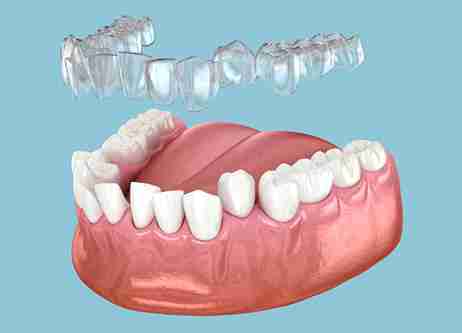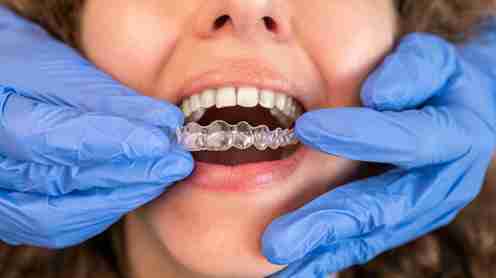Invisalign is now a popular option for those looking for a subtle and comfortable way to straighten their teeth. These transparent aligners are preferred for their comfort and simplicity, with no visible metal brackets or wires. However, even with its many advantages, Invisalign wearers may experience some mild side effects along the way. A slight ache in the teeth and occasional grinding known as bruxism are two common concerns during treatment. These issues, although usually temporary, can cause discomfort if not recognised and managed early. Understanding why they happen and how to address them can help ensure a smoother Invisalign journey.
Understanding Mild Tooth Aches with Invisalign
Experiencing a bit of tenderness or tooth soreness when wearing Invisalign aligners is completely normal especially during the first few days of wearing a new set. This mild discomfort usually indicates that your teeth are reacting to the gentle force, gradually shifting into their new alignment.
In most cases, this ache is:
- Localised to the teeth undergoing the most movement
- Short-lived, usually lasting 24 to 72 hours after switching trays
- Manageable with over-the-counter pain relief or simple at-home remedies
Unlike sharp or ongoing pain, mild aches related to aligners are generally nothing to worry about. Still, paying attention to the frequency and intensity of these sensations is important, particularly if they begin to interfere with daily routines or affect sleep.
What Causes Teeth Grinding with Invisalign?
Teeth grinding, medically referred to as bruxism, is a common issue that can be amplified when starting orthodontic treatment. Invisalign aligners can unintentionally contribute to clenching or grinding, especially when users are still adjusting to the sensation of trays in the mouth.
Common triggers of grinding with Invisalign include:
- Altered bite alignment – As teeth shift, the bite changes slightly, causing temporary misalignment that leads to jaw tension.
- Increased oral awareness – The presence of trays may lead to subconscious clenching, particularly during periods of focus or stress.
- Emotional triggers – Anxiety, even low-grade, is known to cause people to clench their jaws or grind teeth especially at night.
- Tray fit issues – If trays don’t seat properly, the bite may feel off, prompting compensatory grinding or jaw movement.
Several patients who seek support from an emergency dentist in Worthing mention new grinding habits soon after beginning their Invisalign plan. While it’s often short-term, guidance from a dental professional can be crucial if symptoms persist. Image Source - Emergency Dentist Worthing
Image Source - Emergency Dentist Worthing
How Ache and Grinding Are Linked
Mild aching and teeth grinding may seem like separate issues, but they are often interconnected. When you clench or grind your teeth, additional pressure is exerted on the dental arch and surrounding muscles. This strain can exacerbate the natural tenderness caused by Invisalign, making your teeth feel more sensitive than they normally would.
How the two interact:
- Bruxism stresses periodontal ligaments, intensifying tooth discomfort.
- The combination may cause extended discomfort or tension headaches.
Being aware of this relationship can help patients take a proactive approach in addressing both concerns simultaneously, improving their treatment experience.
Signs You Might Be Grinding Your Teeth
Some signs of bruxism can be subtle, especially if it happens overnight. Being able to spot the signs early allows for faster intervention and reduces the risk of complications.
Possible signs include:
- Jaw soreness or tightness upon waking
- Dull, tension-based headaches especially near the temples
- Increased sensitivity or throbbing in specific teeth
- Audible grinding or clicking sounds noticed by a partner
- Visible wear or minor damage on your aligners
- Tenderness in the cheeks, gums, or along the jawline
If you notice a combination of these symptoms, speak with your Invisalign provider or seek advice from an emergency dentist in Worthing to evaluate your situation further.
Relief Tips and Home Care for Management
Most cases of mild aching and grinding are manageable with straightforward at-home strategies. These not only reduce discomfort but also help prevent worsening of symptoms.
Home Relief Tips Table
Symptom | What to Do |
Mild tooth ache | Switch trays before bedtime to sleep through pressure |
Take paracetamol or ibuprofen as directed | |
Grinding | Use a warm compress on the jaw to relax muscles |
Practise breathing exercises or light meditation | |
Both | Avoid hard, chewy foods for a few days |
Stay hydrated and maintain good oral hygiene |
Additional suggestions:
- Use orthodontic wax if trays rub or irritate soft tissue.
- Try jaw massage or stretching exercises to ease muscle tension.
- If the discomfort continues for more than a few days, schedule a follow-up appointment
For those experiencing unrelenting discomfort, professionals offering Invisalign Worthing services may adjust your trays or recommend a temporary night guard.
When to Contact Your Dentist
While most minor aches and clenching resolve without major intervention, knowing when to seek professional help is essential. Ignoring prolonged discomfort may disrupt your treatment or affect oral health.
Get in touch with your dentist if you notice:
- Jaw locking, clicking, or popping sounds
- Pain that lasts more than 72 hours with each new tray
- One tooth causing more discomfort than the others
- Swollen gums, redness, or unusual bleeding
- Trouble sleeping or eating caused by discomfort or strain
- Visible damage to your aligners, like cracks or a poor fit
In these cases, contacting your Invisalign provider or visiting an emergency dentist in Worthing will ensure prompt adjustments and protect your progress. Image Source - Emergency Dentist Worthing
Image Source - Emergency Dentist Worthing
Preventing Future Discomfort and Grinding
Once symptoms are under control, taking preventive steps will help you avoid recurring issues. Taking preventive measures helps ensure a smoother and more comfortable Invisalign experience.
Here’s what you can do:
- Follow wear-time instructions (20–22 hours daily)
- Use chewies to fully seat trays and avoid uneven pressure
- Monitor your stress levels and practice relaxation regularly
- Stay hydrated to prevent dry mouth, which may lead to more clenching
- Keep your posture aligned, especially at a desk or while using devices
- Report small issues early so they don’t turn into major ones
Many Invisalign Worthing patients find that combining consistent habits with professional oversight drastically improves their experience.
Conclusion
While Invisalign is known for being comfortable and easy to use, it's common to experience slight discomfort or develop new teeth grinding habits. These effects are typically manageable and, in many cases, temporary. Recognising early signs, following proper care routines, and seeking expert help when needed will ensure your treatment remains on track and as comfortable as possible.
If you're looking for tailored care and trustworthy dental support throughout your Invisalign treatment, the dedicated team at Worthing is ready to help every step of the way.

